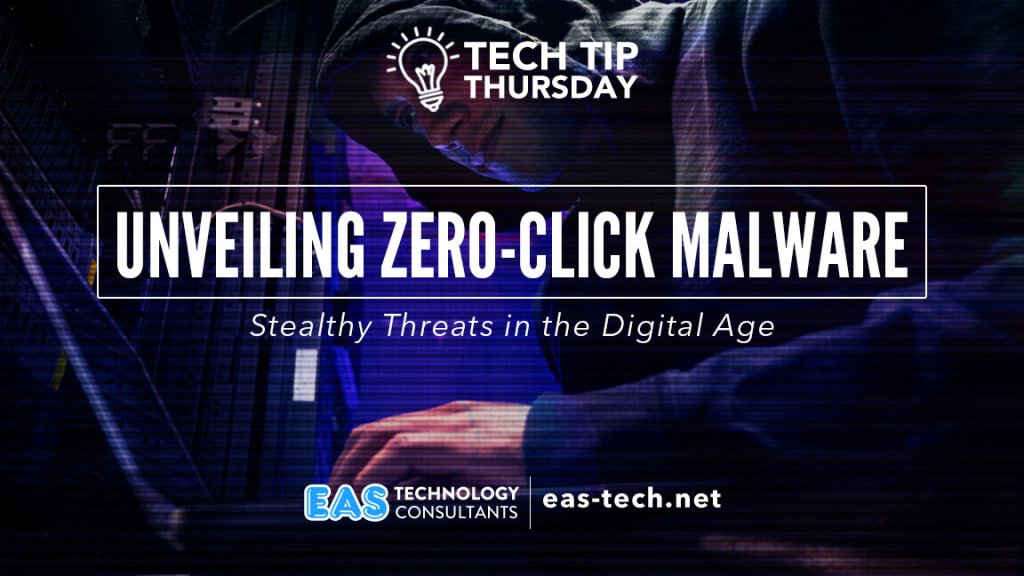
In the ever-evolving landscape of cybersecurity threats, the emergence of zero-click malware has sent shockwaves through the digital realm. As technology advances, so do the methods of cybercriminals seeking to exploit vulnerabilities. Zero-click malware represents a particularly insidious breed of attack, as it bypasses user interaction and silently infiltrates devices, leaving victims unaware of their compromised state until it’s too late. In this article, we’ll delve into what zero-click malware is, its intricate mechanics, the potential dangers it poses, and strategies to combat this growing menace.
Understanding Zero-Click Malware
Zero-click malware is malicious software that exploits vulnerabilities in software or operating systems without requiring any user interaction. Unlike traditional malware that often relies on users clicking on a malicious link or downloading a compromised attachment, zero-click malware doesn’t require the victim to take any action. This makes it an incredibly stealthy and dangerous form of cyber threat.
The techniques zero-click malware employs are often rooted in exploiting security flaws within software components such as messaging apps, email clients, or browsers. Attackers leverage these flaws to deliver their payload covertly, without alerting the victim. This can occur through techniques like remote code execution, memory corruption, or leveraging weaknesses in file parsing mechanisms.
The Dangers of Zero-Click Malware
The inherent danger of zero-click malware stems from its ability to operate silently and evade traditional detection methods. Since there is no user interaction involved, victims may remain unaware of the infection, allowing the malware to collect sensitive information, steal credentials, or gain unauthorized access to systems. The stealthy nature of these attacks can result in significant damage before security professionals even detect the breach.
Furthermore, zero-click malware can serve as a vector for more extensive attacks. For instance, it could be used to infiltrate a device and subsequently drop additional malware that’s capable of more overtly destructive actions like data encryption (ransomware) or establishing a persistent backdoor for future exploitation.
Fighting Back Against Zero-Click Malware
As the threat landscape evolves, so must the defense mechanisms employed to counter these threats. To defend against zero-click malware, organizations, and individuals need to adopt a multi-pronged approach:
- Regular Updates and Patch Management: Keeping software and operating systems up-to-date is crucial. Vulnerabilities that zero-click malware exploits are often patched by software vendors in updates. Promptly installing these patches helps close potential entry points.
- Advanced Threat Detection: Employing advanced security solutions that utilize behavioral analysis, machine learning, and heuristics can help detect anomalous activities indicative of zero-click malware.
- Network Segmentation: Separating critical systems from less sensitive ones can limit the lateral movement of malware, preventing a single compromise from affecting the entire network.
- User Education: Educating users about the risks of zero-click malware and training them to recognize potential threats, even in the absence of user interaction, can significantly reduce the attack surface.
- Zero-Trust Architecture: Adopting a zero-trust model means verifying all users and devices trying to access a network, limiting potential points of compromise.
- Application Whitelisting: Whitelisting only approved applications and blocking unknown or unauthorized programs can prevent the execution of malicious payloads.
- Anomaly Detection: Implementing solutions that monitor network traffic and user behavior for anomalies can help detect and respond to zero-click malware before it causes significant damage.
Zero-click malware represents a grave and evolving threat in the digital landscape, exploiting vulnerabilities without requiring any user interaction. As technology continues to advance, cybercriminals find increasingly sophisticated methods to infiltrate systems and compromise data. By staying informed about the risks, adopting proactive security measures, and promoting a culture of cybersecurity awareness, individuals and organizations can mitigate the dangers posed by zero-click malware and other emerging threats, safeguarding their digital assets in an increasingly complex online world.
